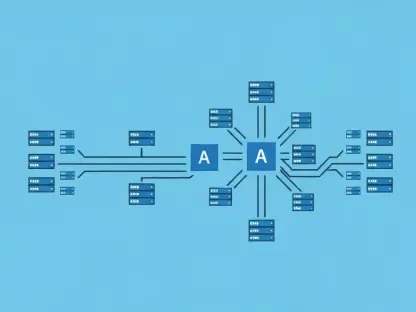The transition from traditional on-premise operational technology (OT) systems to cloud-based solutions is becoming increasingly pivotal for industrial operations aiming to integrate with cutting-edge advancements like artificial intelligence (AI) and the Industrial Internet of Things (IIoT). Despite advances in IT infrastructure, many industrial organizations remain reliant on these outdated OT systems, which are marked by their complexity, rigidity, and tendency to be well-suited only to environments that do not require rapid evolution or integration with modern technologies. As such, these legacy systems can pose a bottleneck to the seamless and efficient convergence of industry and tech, limiting the ability to harness frontline data and optimize operational workflows.
The Promise of Cloud OT
Adopting cloud-based OT solutions holds transformative potential for various industries, promising to reshape the operational landscape much as cloud computing did for IT. While only 31% of manufacturers had made this transition by 2022, the momentum for change is robust, with nearly 60% planning to transition in subsequent years. This change is not merely about modernizing infrastructure; it provides a comprehensive way to integrate advanced and emerging technologies into the OT landscape. Leveraging the cloud allows companies to break down old silos, thus unlocking new avenues for innovation and improving organizational resilience. By embracing cloud OT, industries gain the tools necessary to stay competitive in a continuously evolving marketplace, facilitating a shift towards data-driven, agile, and resilient operational paradigms.
Enhanced Security Capabilities
As operational assets become increasingly connected, cloud-based OT solutions are critical for ensuring robust, next-generation security capabilities. Traditional air-gapped OT systems are becoming obsolete as these isolated setups struggle to keep up with modern connectivity demands. In contrast, cloud OT systems benefit from the extensive resources and pooled intelligence available to major cloud operators, implementing advanced techniques such as demilitarized zones and hybrid-cloud deployments. This integration benefits industrial operators by providing better security control and heightened protection, addressing vulnerabilities exposed by increasing network connectivity. Consequently, cloud OT solutions provide a more secure framework, effectively mitigating risk and ensuring that safety and security keep pace with ever-evolving technological landscapes.
Driving Data-Driven Innovation
The potential for data-driven innovation through cloud OT is tremendous, as it transforms operational systems into dynamic knowledge systems that enhance decision-making processes from the factory floor to the executive suite. By facilitating seamless access to real-time data and enabling convergence with business analytics, cloud OT helps companies dismantle entrenched data silos that are a barrier to innovation. Enhanced data accessibility allows organizations to continuously innovate, driving productivity and adapting swiftly to market demands. Industries such as manufacturing and utilities report significantly higher innovation rates, with some achieving over four times more innovation due to the efficiencies unlocked through cloud-based infrastructures—a testament to how cloud OT can revolutionize industrial productivity and transform strategic planning in data-intensive environments.
Achieving Agility at Scale
The rigidity of traditional OT systems, often outdated and incompatible, creates significant challenges for industries attempting to adapt to new market realities. In contrast, cloud-based solutions empower businesses to achieve agility at scale by offering flexible, plug-and-play solutions from trusted vendors. This flexibility reduces the need to commit massive capital investments towards unproven technologies, permitting greater adaptability when market conditions or technological advancements require pivots. Research indicates that adopting cloud solutions can significantly reduce failure rates and enhance decision-making flexibility, enabling firms to respond dynamically to changing business environments. Cloud OT offers a path to scalable growth, seamlessly integrating technologies as needed and fostering an environment of continual improvement.
Performance Optimization
Cloud OT not only enhances data accessibility but also offers marked improvements in performance optimization by transforming the way data is shared and stored across enterprises. Migrating operational data to the cloud eliminates issues of data silos and storage limitations, facilitating improved real-time data sharing. One notable implementation came from a food manufacturer that solved long-standing production issues by employing cloud-based analytics. Importantly, cloud OT can integrate effectively with edge computing, providing low-latency support crucial for critical applications. Enhanced performance also includes streamlined compliance management, achieving consistency across IT and OT departments. This alignment optimizes organizational performance, ensuring operational workflows are both efficient and responsive to evolving industrial needs.
Navigating Transition Challenges
Transitioning to cloud OT is not without challenges, encompassing technical hurdles and human factors requiring strategic management. Bridging the gap between disparate IT and OT protocols is essential, as is the reassurance of workforces engaged in this technological evolution. Companies must be attentive to the human aspect by integrating insights and changes into end-user workflows without causing disruptions. The process should be managed with care to maintain security and avoid compromising operations due to unscheduled downtimes. Overcoming these challenges necessitates collaboration between IT and operations experts, underscoring the importance of cohesive efforts in ensuring a smooth and successful transition to this innovative technology framework.
Best Practices for CIOs
To ensure successful integration of cloud OT, CIOs must adhere to several best practices, beginning with presenting a compelling case for change that highlights tangible business value and improved user experience. Conducting a comprehensive audit of existing systems is essential to identify risks and opportunities for improvement. Unifying oversight of IT and OT is critical, bridging authority gaps that can hinder effective convergence. Another key focus area is managing costs, requiring the careful consideration of funds allocated to legacy versus cloud technologies. Lastly, leveraging cloud technology to support talent development is paramount, as this transition requires upskilling both in software engineering and among frontline teams, ensuring seamless integration into existing workflows and empowering organizations to harness the full potential of cloud OT.
Positioning for Future Success
The shift from traditional on-premise operational technology (OT) systems to cloud-based solutions is increasingly crucial for industrial sectors aiming to embrace modern advances such as artificial intelligence (AI) and the Industrial Internet of Things (IIoT). Many industrial companies still depend on these outdated OT frameworks despite advancements in IT infrastructure. These legacy systems are characterized by their complexity and lack of flexibility, making them suitable only for stable environments that do not require quick adaptation or integration with newer technologies. Consequently, these aging systems can act as a barrier to the smooth integration of industry and technology, often hindering the ability to effectively utilize real-time data and optimize operational processes. Transitioning to cloud-based solutions not only enhances the efficiency of industrial operations but also supports innovation and growth. By overcoming the confines of old systems, industries can better tap into the potential of AI and IIoT, transforming operations with enhanced insight and performance.









